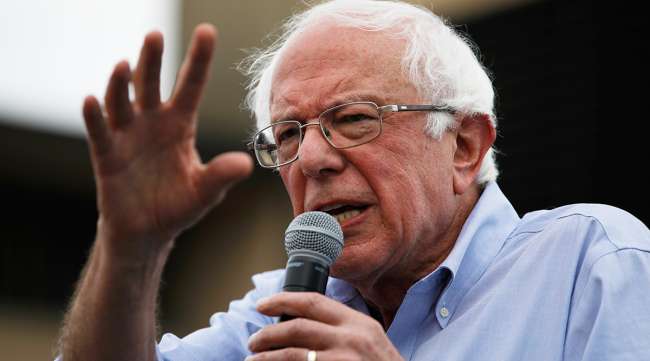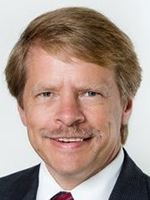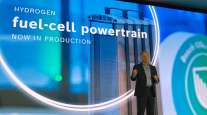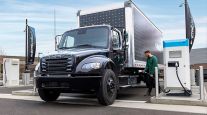Senior Reporter
Pace of EV Introductions Could Quicken

[Stay on top of transportation news: Get TTNews in your inbox.]
A trickle of electrified heavy-duty commercial vehicles are taking to the roads, as fleets and truck makers embrace a trend that industry forecasters predict could reshape the nation’s highways, with more and more diesel-powered freight trucks gradually converting to electrification.
A far more ambitious vision of that conversion has arrived amid the race to the White House in 2020, as Sen. Bernie Sanders — an independent from Vermont who is seeking the Democratic nomination — had laid out a plan that would bring sweeping zero-emissions mandates to bear quickly on the industry.
The plan, released Aug. 22, has, as a key element, replacement of all shipping trucks no later than 2030.
“Because this nation depends heavily on goods that are shipped all over the country by truckers, we must ensure that they are able to keep up their pace while we meet our climate goals. That means we must spend $216 billion to replace all diesel tractor-trailer trucks with fast-charging and long-range electric trucks,” the plan states. “Truck drivers from the largest fleets to small owner-operators will be able to access this funding.”

ACT Research last year forecast commercial electric vehicles will make up a significant share of the Class 4 through Class 8 market in 2030 to 2035. At this stage, however, the industry is taking a measured approach. Daimler Trucks North America presented on Aug. 20 the first two of its Freightliner eCascadia electric models to Penske Truck Leasing and NFI. Each will put their truck into commercial applications.
Tesla and Nikola Motor Co. have announced plans for battery-electric Class 8 models. Tesla has shown a prototype to customers who placed orders. Nikola, which also is going to offer a heavy-duty hydrogen fuel cell model, plans to test both of its trucks later this year, and production is expected in late 2022.
Commercial vehicle suppliers like Cummins Inc., Dana Corp. and Meritor Inc. continue to advance their respective electrified agendas.
Penske declined to comment on Sanders’ plan. A Nikola spokesperson said the company does not “get involved in politics.”
Dana Inc. does not comment on hypothetical scenarios, said spokesman Jeff Cole, but noted that the company’s large international footprint — it operates in 33 countries on six continents — “requires that we anticipate and respond to the ever-changing regulatory environment throughout the world. Like our customers, we believe it is important to be conscious of the impact our products have on the environment.”
Sanders believes his plan could follow in the footsteps of other grand-scale projects the country has undertaken.
“The federal government electrified America as part of the New Deal. The United States of America put people on the moon 50 years ago. We can sure as hell transform our energy system away from fossil fuels to 100% renewables today and create millions of jobs in the process,” according to the plan.
The plan calls for an electrical grid that would be tied to renewable energy sources, and a broad network of charging stations that would emerge as research and development into renewable energy is dramatically expanded.
The price tag for all facets of the overall plan comes to $16 trillion.

Mihelic
“If Bernie becomes a significant candidate going into the election, [the plan] will get a lot of play. If he doesn’t make it to the end of the line, it won’t. That’s politics. What he is asking is basically to create a zero-emission mandate on a national scale by 2050,” Mihelic Vehicle Consulting President Rick Mihelic told Transport Topics.
Currently, zero-emissions mandates are in place in only a few regions.
“On a national scale, is it technically feasible to go do this? Probably. We are America. We do big things. If we prioritize and focus, we can make anything happen,” Mihelic said, but said that his was a neutral perspective.
He noted that there are only a handful of prototype electric trucks and hydrogen-powered fuel cell trucks on the roads, a scenario he believes will remain until the market gets established and “the demand is really there.”




